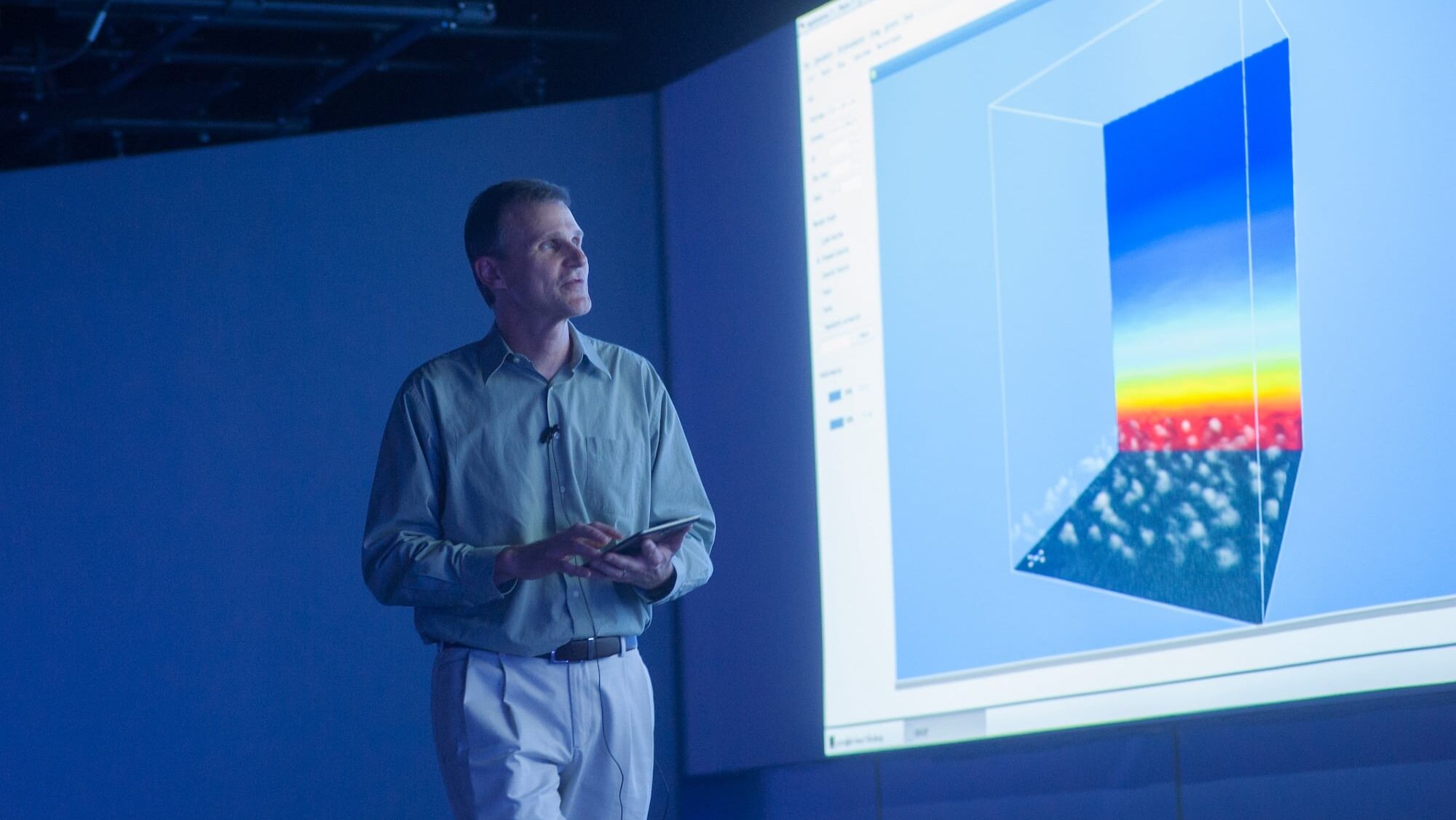Untangling Complex Interactions – With Lasers

So you have a superconductor, and it works great! But you want to know exactly why and how it works on the atomic level. What do you do?
NC State physicist Lex Kemper was part of team that decided the best answer to the above question is: hit it with laser pulses. Time-resolved, angle-resolved photoelectron spectroscopy (tr-ARPES) is the name for the technique they chose, which enables scientists to observe the ways in which electrons within a material interact with other electrons and with the atoms that make up the material. The technique has two steps: an initial laser pulse infuses the material with a lot of energy, which gets the electrons excited. The second pulse acts as a probe which measures the electrons’ quantum states and how they move back to their initial state.
“It’s like ringing a bell,” Kemper says. “You strike the bell and it vibrates, but eventually the vibrations stop. We are interested in how those vibrations stop – like watching a movie in reverse.”
Kemper was part of a team of researchers that included scientists from Brookhaven National Laboratory (BNL) and the University of Duisburg-Essen in Germany. Scientists had theorized that ultrafast spectroscopy might be a way to unravel the mysteries of superconductors; specifically, how electron interactions within them contribute to the properties they have. For example, superconductors usually only work well at very cold temperatures. In order to expand the uses of these materials, researchers need to understand their most fundamental properties.
So the team set out to match theory to practice. Kemper designed computer simulations that predicted how the experiments might actually turn out, while BNL colleague Jonathan Rameau ran the physical side of the experiment in the lab of Uwe Bovensiepen in Germany. They tested the technique on a superconducting material, Bi2Sr2CaCu2O8+x (Bi2212), a complex layered material that has puzzled scientists for decades.
The combination of the simulations and the tr-ARPES measurements allowed the researchers to isolate unique signatures that corresponded to different types of electron interactions within the material, such as interactions between electrons and atoms or electrons and electrons.
“In normal experiments all of these electron interactions are mixed together, but this technique gave us the ability to pull them apart and understand how each one of these complex interactions work within the material,” Kemper says.
“We’re really building the theoretical underpinnings of this field – creating tools and experiments that will enable us to understand not just one material, but also fundamentals of nature.”
The researchers’ next steps include using the technique to study superconductors while they’re in the superconducting state, since their initial experiments were done at ambient, or room, temperature.
The work appears in Nature Communications and was supported in part by grants from the Department of Energy and the National Science Foundation.
Below: Movie indicating how many electrons live in the quantum states. Typically, before the system is hit with a laser pulse, all the electrons live in the quantum states below the line at y=0. The laser pulse kicks them above it, and researchers observe how they return to their initial states. Credit: Lex Kemper.
This post was originally published in NC State News.
- Categories:


